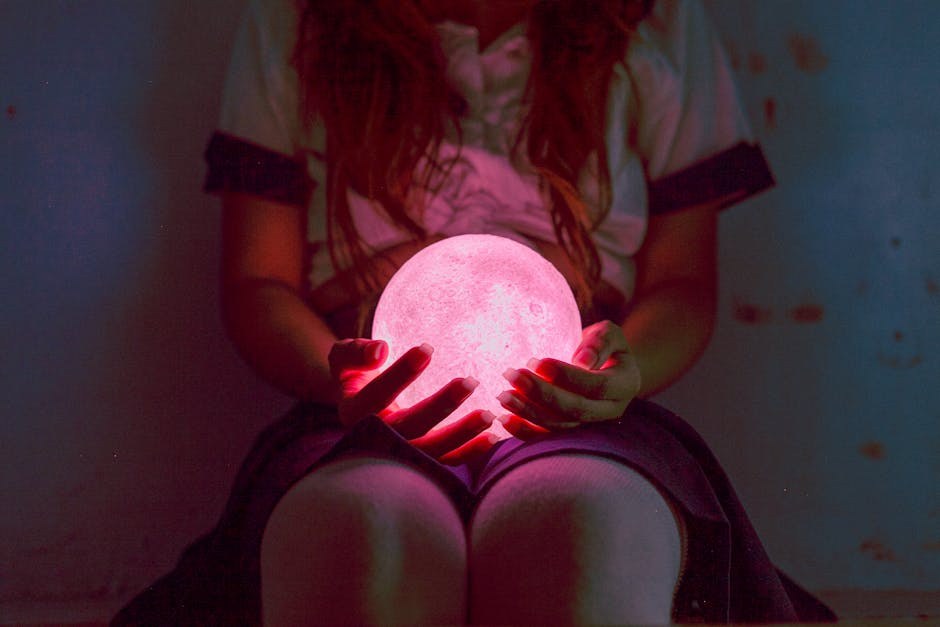Some choices look small from the outside yet ripple through everything that follows – and bedroom lighting is precisely one of those choices. Before a single garment slips to the floor, the glow in the room is already shaping mood, comfort, and connection. For some, brightness feels playful and honest; for others, dimness invites ease, privacy, and goosebump-worthy anticipation. There is no universal switch to flip. What matters is understanding how light behaves in intimate spaces, how it influences bodies and minds, and how two people can coordinate a scene that supports desire rather than distracting from it. In that spirit, this guide reframes the old either-or debate and shows how to use bedroom lighting as a flexible backdrop for intimacy – not a rigid rule.
Why the glow matters more than you think
Light sets emotional tone the way a soundtrack scores a film – subtle in the background, but decisive once you pay attention. In the same way a soft score warms a scene, bedroom lighting nudges the nervous system toward calm, curiosity, or alertness. Strong, overhead illumination can sharpen detail and energy. Softer, lower light invites relaxation and a slower pace. If intimacy is partly about feeling safe enough to drop self-consciousness, then tailoring bedroom lighting becomes an act of care for both partners.
Natural daylight has its own personality – fresh, clarifying, and often invigorating. That may feel great on a lazy morning when connection starts with laughter and eye contact. At night, however, artificial sources allow you to sculpt bedroom lighting into something cozier. Warmer tones tend to soften edges and skin, whereas cool tones push the room toward crisp focus. Either path can work; what matters is matching the scene to the sensation you want to encourage.

Another layer is rhythm. Our bodies keep time with cues from the environment, and brightness late at night can keep the mind switched on when you would rather wind down. Thoughtful bedroom lighting – dimmers, lampshades, and shaded sources – helps bridge the excitement of closeness with the drift toward sleep after. You are not just setting a stage for the moment; you are smoothing the transition after the credits roll.
When brightness elevates intimacy
Plenty of couples thrive with a clearer view. Here are ways lit scenes can heighten experience without turning the room into a showroom. Consider these as invitations rather than rules – bedroom lighting can be dialed up for clarity and delight, then softened again when you want more mystery.
Seeing what arouses you. Detail is its own kind of fuel. With brighter bedroom lighting, bodies become landscapes – freckles, curves, and expressions are visible, allowing desire to build from what you can actually see. It is not just visual hunger; it is the relief of feeling fully witnessed, which can deepen trust.

Reading feedback in real time. Micro-expressions, breath changes, the way a hand reaches back – visual cues are abundant. Brighter bedroom lighting helps both partners catch those signals and adjust without breaking flow. That responsiveness turns guesswork into a fluent conversation.
Creating a crafted atmosphere. Bright does not have to mean harsh. Lamps with shades, indirect wall washes, or a cluster of bulbs at low output can produce flattering clarity. With measured bedroom lighting, you get vibrancy without glare – the visual equivalent of turning the volume up without distortion.
Avoiding clumsy detours. Darkness hides obstacles, and stubbed toes are not sexy. A well-placed sconce or nightstand lamp provides just enough bedroom lighting to keep bodies oriented – helpful when experimenting with movement, toys, or unfamiliar spaces.

Grounding after a lively evening. If alcohol fogs judgment, brightness cuts through the haze. A modest increase in bedroom lighting makes it easier to notice whether attraction is mutual and enthusiastic. Clarity protects connection – and dignity.
Practical follow-through. Aftercare matters. Brighter bedroom lighting simplifies cleanup, finding clothing, and tending to shared spaces so the room feels cared for rather than chaotic. The gesture of tidiness is a quiet thank-you.
What can go wrong when the room is too bright
Light can flatter – and it can interrogate. When bedroom lighting crosses from inviting to interrogational, the spell thins. These common pitfalls show why more lumens are not always better.
Highlighting insecurities. Self-consciousness can surge when every line, scar, or dimple stands center stage. Even confident people sometimes flinch under unforgiving bedroom lighting. The goal is not to hide reality, but to temper it until comfort catches up with curiosity.
Headaches and eye strain. Harsh beams, bare bulbs, or flicker can produce tension rather than ease. If your eyes narrow against the glare, your body is already bracing – a posture at odds with surrender. Diffused bedroom lighting reduces strain and lets attention return to sensation.
Unwanted ambience. Fluorescents hum with the mood of a budget kitchen – not the energy you want in a sanctuary. Some light temperatures flatten skin tones or cast clinical shadows. If your first thought is “office,” your bedroom lighting is working against you.
Privacy concerns. Curtains open, neighbors close, silhouettes on display – sometimes brighter bedroom lighting means you are lit like a stage. A quick check of blinds can preserve the bubble of intimacy.
Spotlighting clutter. Brightness has a way of pointing at undone chores. When the lamp makes the laundry pile the star, attention drifts. Calmer bedroom lighting, paired with light tidying beforehand, keeps focus where it belongs.
Performance nerves. Trying something new can feel thrilling – until you feel scrutinized. If the pose starts to feel like a pose, dimming bedroom lighting can gently nudge the scene from “audition” back to play.
When shadows unlock sensation
Darkness changes the rules. Without dominant visual input, touch grows louder, scent sharpens, and the mind fills in what the eyes cannot. Many people find that dimmer bedroom lighting helps them relax into their bodies, laugh more easily, and go slower – or bolder – with less self-editing.
Richer tactile focus. When sight recedes, skin takes center stage. The glide of fingers, the whisper of breath, the warmth at the back of a knee – dim bedroom lighting primes attention for textures and temperatures that might otherwise be missed.
Comfort for the shy. If stepping into brightness tightens your shoulders, darkness can be a blanket. Softer bedroom lighting reduces the urge to monitor how you look and frees energy for how you feel. That shift alone can heighten arousal.
Mystery as an amplifier. Anticipation glows in low light. Not knowing the next point of contact turns each moment into a tiny cliffhanger. Intentionally dim bedroom lighting lets partners choreograph surprise and keep curiosity hovering a breath away.
Verbal play lands stronger. Words carry farther in the dark. With eyes doing less, the ear hangs on tone and timing. Murmured suggestions feel more electric when bedroom lighting recedes to a hush.
Freedom of expression. Faces in ecstasy can be vulnerable. Shadow softens self-awareness so your body writes its own grammar. If you tend to clamp down to avoid being seen, gentler bedroom lighting gives permission to let go.
Lower threshold for experimentation. Novelty is less intimidating when imperfections are not spotlighted. Dim bedroom lighting reduces the sense of being evaluated, which encourages playful exploration.
Where pure darkness complicates things
Pitch black can invite adventure – and minor chaos. If every step becomes a guess, the risk-reward ratio shifts. These friction points do not forbid darkness; they simply argue for a sliver of glow within your bedroom lighting plan.
Condom confusion. Orientation by touch alone can slow momentum and invite mistakes. A pinch of bedside bedroom lighting – a small lamp, an LED dot – preserves safety without ruining mood.
Lost and found. Clothing, wrappers, jewelry, hair ties – they migrate. Total dark stretches cleanup into a scavenger hunt. A whisper of bedroom lighting sparely aimed at the floor saves time and awkward searches.
Misdirected enthusiasm. Without visual confirmation, alignment can wander. A trace of bedroom lighting helps bodies coordinate so exploration stays pleasurable rather than uncomfortable.
Fluid logistics. After the final shiver, towels and tissues are easier to manage with just-visible surfaces. Strategic bedroom lighting keeps aftercare smooth and considerate.
Light shock at the end. Eyes adapted to darkness revolt when brightness slams on. Instead, let bedroom lighting rise gradually – a dimmer nudge, a shade tilted open – so the landing is soft rather than jarring.
Crafting a shared atmosphere
There is no right answer that fits everyone, every time. Treat bedroom lighting like a toolkit – a set of adjustable pieces you blend according to mood, energy, and the kind of connection you want that night. The most romantic light is the one you can change without breaking chemistry.
Make dimmers your baseline. Install dimmers on primary sources so you can slide from lively to languid as the moment evolves. This single upgrade turns rigid bedroom lighting into something responsive, the way a volume knob guides a playlist.
Favor indirect glow. Light bouncing off walls and ceilings feels like a hug, while bare bulbs can feel like an interrogation. Use lampshades, floor uplights, or hidden strips so bedroom lighting wraps rather than pierces.
Play with warmth. Warmer tones flatter skin and quiet the nervous system. If your bulbs allow adjustment, keep bedroom lighting on the amber side for intimacy, reserving cooler tones for daytime chores.
Layer small sources. Two or three low-level points beat a single bright blast. A bedside lamp, a soft strip behind the headboard, and a faint nightlight by the door together create bedroom lighting that is flexible and forgiving.
Use color with intention. Gentle color washes can signal mood shifts – ruby for drama, blush for tenderness, lavender for a dreamy hush. Keep saturation modest so bedroom lighting remains flattering rather than theatrical.
Let candles have their moment. Flame flicker paints bodies with moving shadow – a timeless effect. Keep surfaces clear and stable, and treat candles as accents within the broader bedroom lighting plan.
Mind the season. Long nights invite cocooning; long days buzz with energy. Adjust bedroom lighting to echo the season – softer pools in winter, airier layers in summer – so the room harmonizes with the calendar.
Build for silence. Switches that click loudly, lamps that hum, fans that buzz – tiny noises break immersion. Choose bedroom lighting hardware that changes state quietly so the mood does not stutter.
Keep a hands-free option. Remote controls or voice triggers prevent the mid-kiss scramble. When bedroom lighting responds to a word or a tap, flow stays intact.
Design a graceful exit. After, let brightness drift up in stages. A slow fade in bedroom lighting respects tender eyes, post-play conversation, and the slide toward sleep.
How to talk about it without killing the vibe
Conversation about light can feel clinical – unless you weave it into flirtation. The trick is timing. Ask early, when the mood is forming, or embed the choice inside play. “Do you like this glow or should I lower it a touch?” is not a technical question; it is an invitation to co-create. Treat bedroom lighting as a shared remote – something you pass back and forth with smiles rather than debates.
Another approach is the pre-date reset. Five minutes before meeting, scan the room. Clear clutter, align the lampshade, check that the dimmer travels from laughter-bright to whisper-low. With bedroom lighting calibrated in advance, you will not need to pause later and break rhythm with a long adjustment session.
Matching light to different moods
Desire wears many outfits – playful, tender, daring, unhurried. Use bedroom lighting to mirror each mood so your environment quietly says “yes” to the flavor of intimacy you are seeking tonight.
Curious and adventurous. Choose layered glows you can nudge brighter during movement-heavy exploration. This style of bedroom lighting keeps safety high and expressions visible while leaving corners soft.
Slow and sensual. Lower the dimmer, aim light sideways, and keep it warm. Bedroom lighting here should feel like velvet – textured, inviting, and almost liquid.
Playful and flirty. Add a hint of color and a little sparkle – perhaps a string tucked along a shelf or headboard. Bedroom lighting becomes confetti in slow motion, cheerful without being glaring.
Intimate and restorative. After a long day, choose almost-dark with one gentle pool near the bed. This bedroom lighting says “rest here” and makes whispered conversation feel like a secret shared under a blanket.
Practical choreography for the room
Great scenes are planned to feel unplanned. Position furniture and light so bodies move naturally from hello to closeness without detours. This is where bedroom lighting meets traffic flow.
Pathways first. Ensure a clear line from door to bed to bathroom. A tiny night-level marker discreetly guides feet at three in the morning. Subtle bedroom lighting keeps the route visible without bleaching the moment.
Surfaces next. Keep tablets, books, and water within a hand’s reach so you are not hunting tools in the dark. If toys are part of your repertoire, a low drawer with a soft interior light extends the bedroom lighting strategy to storage.
Textures last. Bedding and throws interact with light. Matte materials drink glow; silks and satins reflect it. Notice how your bedroom lighting lands on fabrics and choose what flatters both skin and space.
Tailoring the scene for different comfort levels
People arrive with different histories, boundaries, and thresholds. One person may adore the clarity of bright eyes-open connection; another may only relax when half hidden. Bedroom lighting can reconcile those differences creatively.
Try gradients – a lamp bright at the headboard and dimmer at the foot, or vice versa – so each person can tilt toward preferred light without dividing the room. Consider directional shades that send most of the glow away from one side. With modular bedroom lighting, compromise becomes elegant rather than clumsy.
Making the shift from setup to spontaneity
Perhaps the most seductive quality a room can have is responsiveness. When the environment answers your next move without a pause – when bedroom lighting dims as a hand finds a hip, or warms as faces draw close – the moment feels composed and alive. You can pre-program nothing and still achieve this by making controls intuitive: dimmers within reach, remotes on the nightstand, cords tucked, switches labeled discreetly. The less you think about mechanics, the more you feel.
A note on honesty and allure
There is beauty in clarity and magic in shadow. The point is not to crown a winner but to understand how each mode supports different parts of intimacy. Brightness invites frankness – “See me as I am.” Darkness invites curiosity – “Find me where I am.” Bedroom lighting is the dial that moves between those messages. Turn it toward truth when you want bold eye contact and unguarded smiles. Turn it toward mystery when you want goosebumps and breathless pauses. Either way, let the room echo the story you are telling together.
In practice, that means choosing not just one scene but a set of scenes you can reach for easily. Keep a comfortable baseline you both enjoy, then layer options that pivot the mood by degrees. Maintain a shared language for the controls – a word, a gesture, a laugh – and you can keep playing without losing momentum. When bedroom lighting becomes a partner instead of an obstacle, the rest unfolds with far less effort and far more pleasure.